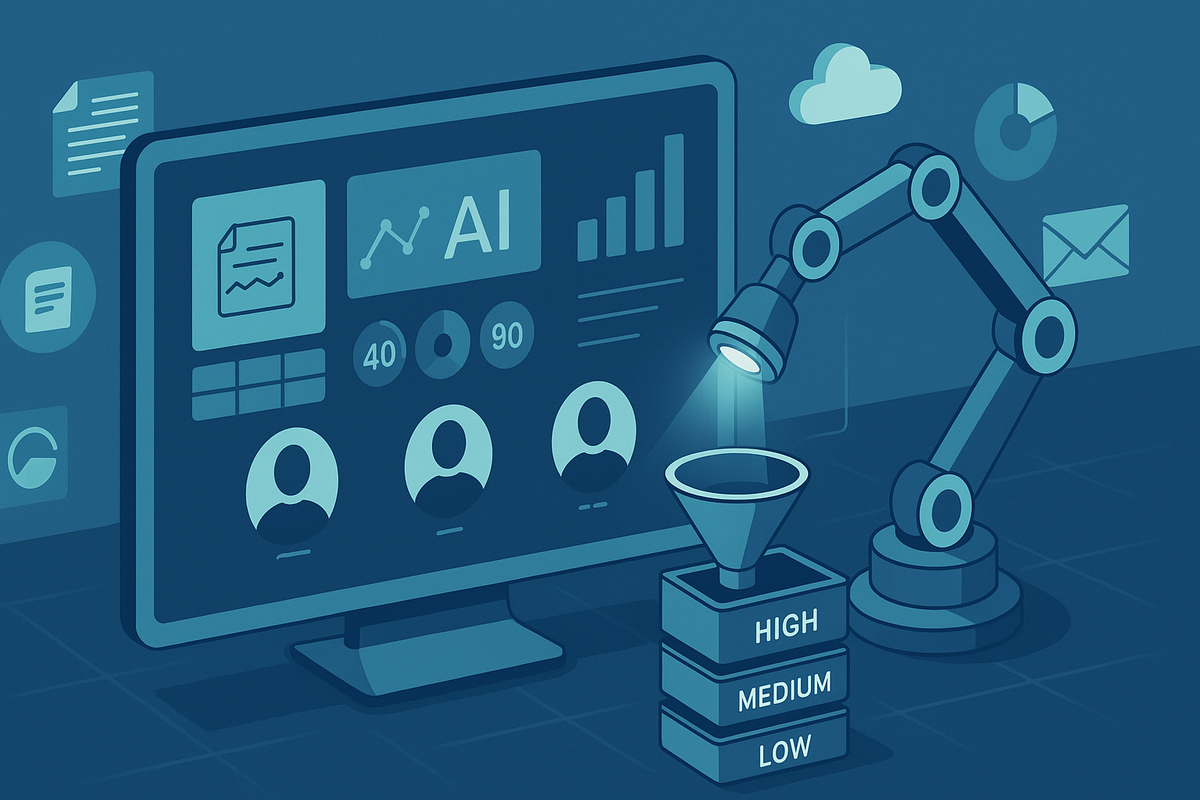In B2B marketing, gated whitepapers remain one of the most effective tools for capturing leads. But as more businesses embrace content syndication and automated downloads, a new problem has emerged:
Not all leads are created equal.
That’s where AI-powered lead scoring steps in. In 2025, marketers are no longer asking "How many leads did we generate?" but rather "Which of these leads are worth our sales team’s time?"
With the help of artificial intelligence, whitepaper campaigns are evolving from volume-driven tactics to intelligent, revenue-focused strategies.
The Challenge: Whitepaper Downloads Don’t Always Mean High Intent
It’s common to see whitepaper campaigns generate hundreds or thousands of leads. But here’s what frustrates many B2B marketers and sales teams:
-
A large portion of those leads never engage again
-
Many don’t match the ideal customer profile (ICP)
-
Some are students, researchers, or competitors—not buyers
This leads to wasted SDR time, lower conversion rates, and misaligned expectations across marketing and sales.
Enter AI Scoring: Turning Downloads into Pipeline
AI lead scoring uses machine learning to evaluate and rank leads based on:
-
Company size and industry
-
Job title and seniority
-
Engagement signals (opens, clicks, time spent reading)
-
Technographic and firmographic data
-
Historical conversion patterns
Instead of passing every download to sales, AI can assign a score (or predictive intent) to each lead—ensuring only the most promising ones are routed for follow-up.
Why It Matters for Whitepapers
Whitepapers are a unique form of content. Unlike blogs or webinars, they often attract top- and mid-funnel leads looking to research and compare solutions. But without context, it’s hard to know which downloads show real buying intent.
With AI scoring in place, you can:
-
Prioritize follow-ups based on behavior and fit
-
Send nurturing emails only to low- or mid-score leads
-
Identify high-potential leads faster
-
Personalize outreach based on predicted needs
How AI Scoring Works in a Whitepaper Campaign
Let’s say 1,000 users download your latest report.
With a modern system integrated (like the one supported at WhitepapersOnline), your AI engine can analyze signals such as:
-
Did the user download multiple papers or just one?
-
What device or region are they from?
-
Did they open your follow-up emails?
-
Do they resemble previous leads that became customers?
Based on this, each user is scored from 1–100, or categorized as Hot, Warm, or Cold.
This gives marketers real-time intelligence to trigger lead routing, email sequences, or nurture campaigns—automatically.
Benefits of AI-Powered Lead Scoring for Whitepaper Campaigns
| Benefit | Impact |
|---|---|
| Prioritization | Sales focuses only on high-value prospects |
| Smarter Nurturing | Tailored messaging based on lead score |
| Deeper Insights | Understand which content drives real engagement |
| Sales Enablement | Equip reps with predictive insights before outreach |
| Time Saved | Eliminate manual lead filtering |
How to Get Started
You don’t need a full data science team to implement AI scoring. Here’s how to begin:
-
Use a content syndication platform like WhitepapersOnline that supports lead tracking and intent analysis
-
Integrate with your CRM or marketing automation (e.g., HubSpot, Marketo)
-
Leverage third-party enrichment tools to fill in gaps (e.g., Clearbit, ZoomInfo)
-
Train your AI model using past campaign data and sales conversion trends
-
Continuously refine based on real outcomes and sales feedback
Want to Syndicate Your Whitepapers Smarter?
Beyond just lead capture, you need a platform that helps you score, qualify, and convert.
With WhitepapersOnline, you get:
-
Access to targeted B2B audiences
-
Built-in lead scoring and campaign analytics
-
Seamless integrations with your tech stack
-
Faster pipeline acceleration
Ready to take the guesswork out of whitepaper lead gen?
Bonus Resource
If you're exploring broader demand generation tools, check out iTMunch’s B2B content syndication services for enterprise-level campaign execution and lead nurturing.

